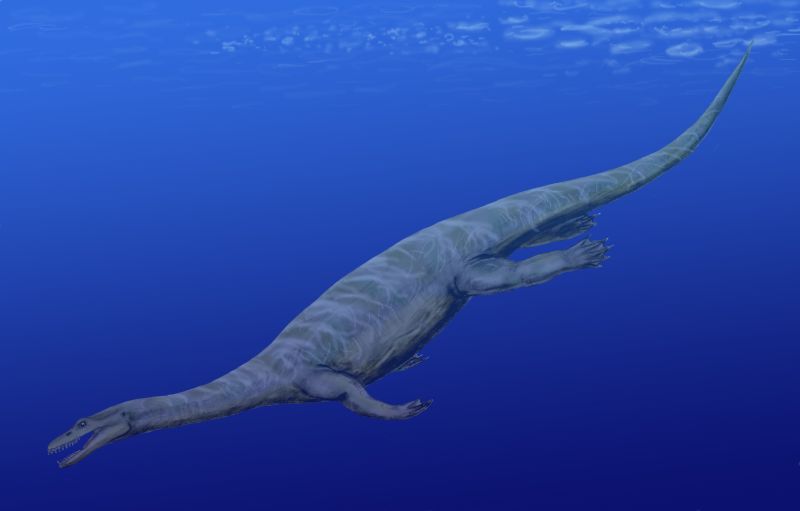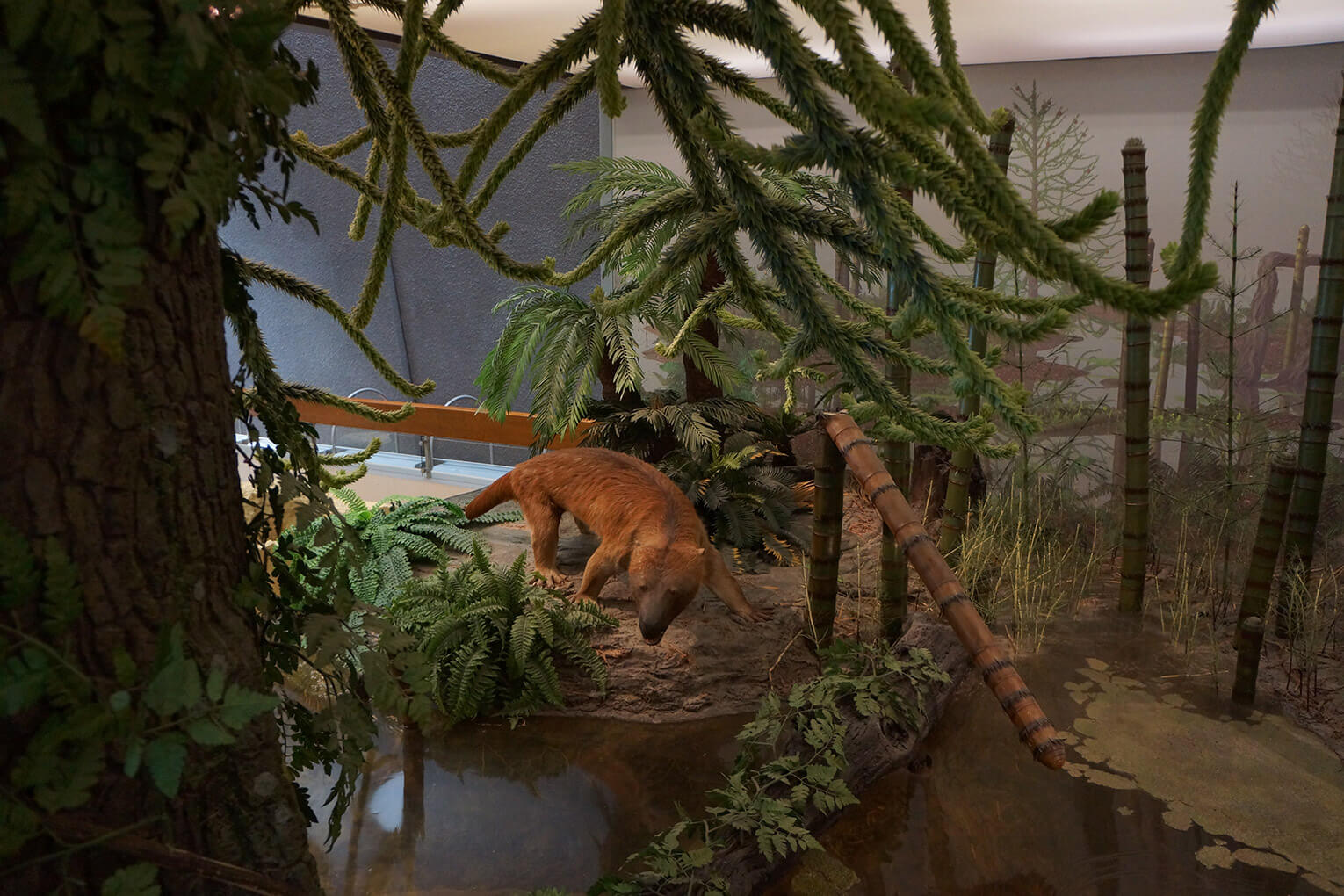Giant steps
What most distinguishes this period is the rapid evolution of reptiles. Swimming in the oceans were the ancestors of ichthyosaurs and plesiosaurs, while the earliest crocodiles lived in fresh water. Flying reptiles, the pterosaurs, dominated the skies, and the first dinosaurs appeared on land about 230 million years ago.
Another important development was that the ancestors of mammals entered the scene.
Dinosaurs arrive
At the start of the period, various mammal-like reptiles predominated on land. But then many new groups of reptiles began to evolve, and things went quickly.
Most successful were the reptiles that had two skull cavities. They evolved into a group called Archosaurs, or ruling reptiles. Some eventually evolved into crocodiles, others into dinosaurs.

Coelophysis, the first known predatory dinosaur.
Image: Simon Stålenhag
Soon there were many different groups of dinosaurs. Among the predators were Eoraptor in what is now Argentina and Coelophysis in present-day North America. Also during this time lived plant-eaters like Plateosaurus, which is displayed nearby. It became one of the most common dinosaurs in what is now Europe.
Pterosaurs
There were already vertebrates that could glide through the air during the Permian. But the first true flying vertebrates were pterosaurs, related to the dinosaurs that evolved at the end of the Triassic.

Eudimorphodon, Triassic pterosaur.
Image: Simon Stålenhag
The pterosaurs had a long tail that helped them to balance during flight. They were relatively small predators with sharp teeth, and probably lived on insects and fish. Their most distinguishing feature was, of course, the wings that evolved from the hands and forelimbs.
Back to the sea
During the same time that some reptiles were competing on land, others returned to the oceans. Over time, they became increasingly adapted to life in sea water. In all such groups, the limbs became shorter and flatter in order to be more effective in water.

Nothosaurus, an example of reptile who return to life in the oceans.
Image: Nobu Tamura
Among these reptiles were ichthyosaurs that resembled dolphins and Nothosaurus, which later evolved into plesiosaurs.
You can see a genuine fossil of Keichisaurus, another plesiosaur ancestor, here in the exhibition.
Mammal ancestors
Early during the Triassic Period, there existed meat-eating reptiles which eventually evolved into ancestors of the mammals. What distinguished them from other land-dwelling reptiles was the skull – it had only a single cavity, just as in modern mammals.

Model of cynodont, a carnivorous reptile from the Triassic, which is very similar to a mammal.
Photo: Thomas Mörs
The evolution from these reptiles to mammals occurred in many steps during the following 40 million years, until the close of the Triassic Period.
Living at that time were the cynodonts, a group of reptiles that were very like mammals. The front, canine and back teeth were very similar to mammals’. They also had a closed palate, which enabled them to chew food and breathe at the same time, just like humans.
The spinal vertebrae of cynodonts evolved and became specialized. A diaphragm in the chest enabled them to breathe more efficiently. It is believed that cynodonts were covered in fur.

Cynognathus, a member of the cynodont group.
Image: Jacksonwarrior
These new features indicate that cynondonts were warm-blooded. This means that they could be active even when it was cold, as during the night. Also, their legs were placed directly under the body, enabling them to run faster than their ancestors whose legs were located on the sides of their bodies – like crocodiles’.

